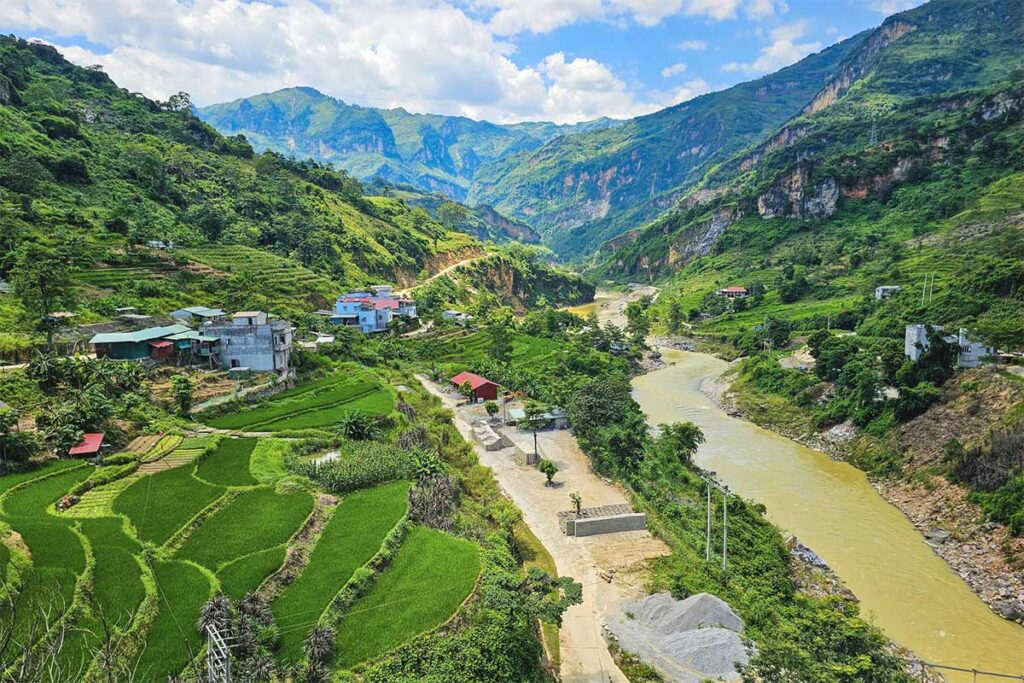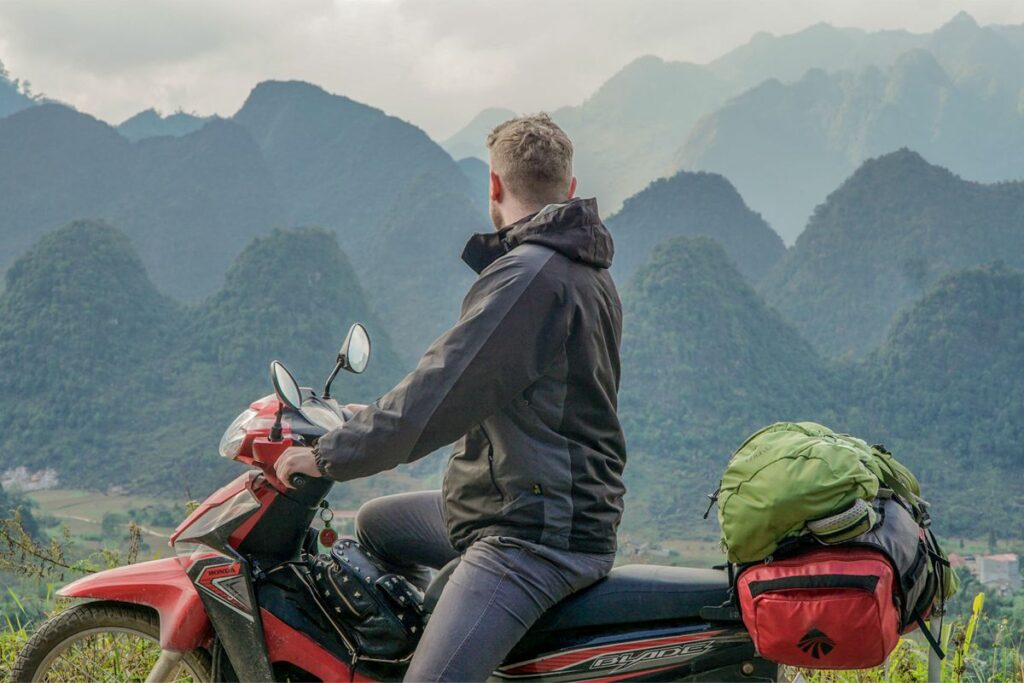What & where is Xin Man?
Xin Man is a remote district in the far west of Ha Giang province, bordering Lao Cai and nestled in the mountains near the Chinese frontier. It lies next to Hoang Su Phi, a better-known region famous for its terraced rice fields, but Xin Man remains even more off the radar.
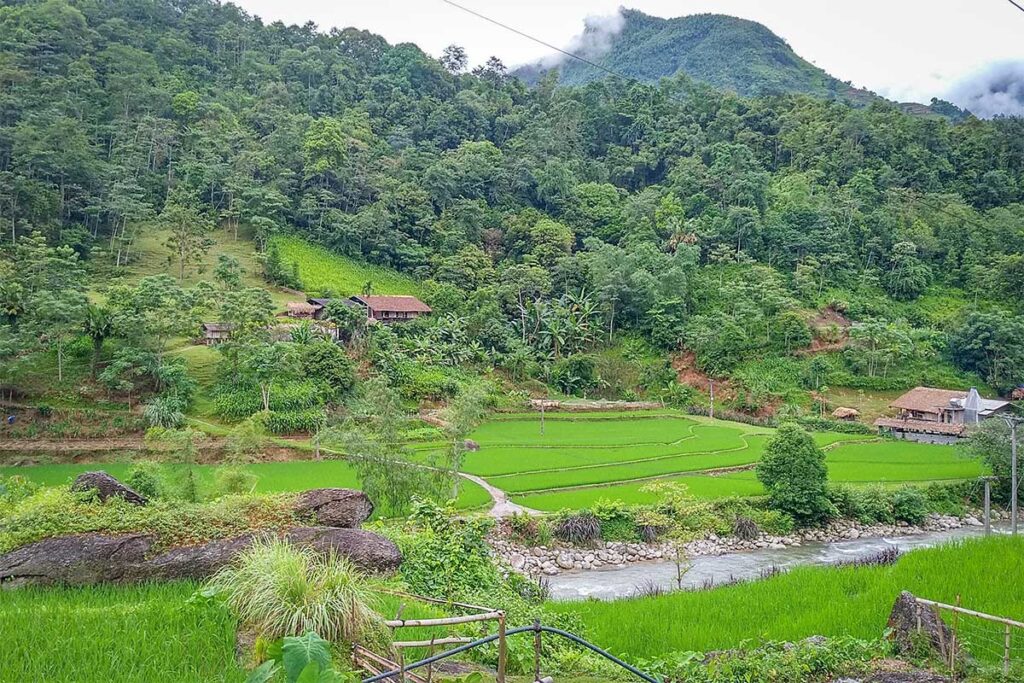
The main town is Coc Pai, a quiet trading center surrounded by rice paddies, small villages, and misty peaks. It borders Bac Ha in Lao Cai province, making it a great detour or extension for travelers heading between northern Vietnam highlights.
Xin Man is ideal for nature lovers, photographers, and anyone seeking a peaceful, non-touristy area to experience authentic local life and untouched landscapes.
Best things to do in Xin Man
Looking for things to do in Xin Man? This remote region of Ha Giang offers a surprising range of natural sights and cultural encounters for those willing to go off the beaten track. From rugged peaks and waterfalls to ethnic markets and scenic drives, here’s what not to miss.
1. Suoi Thau Plateau
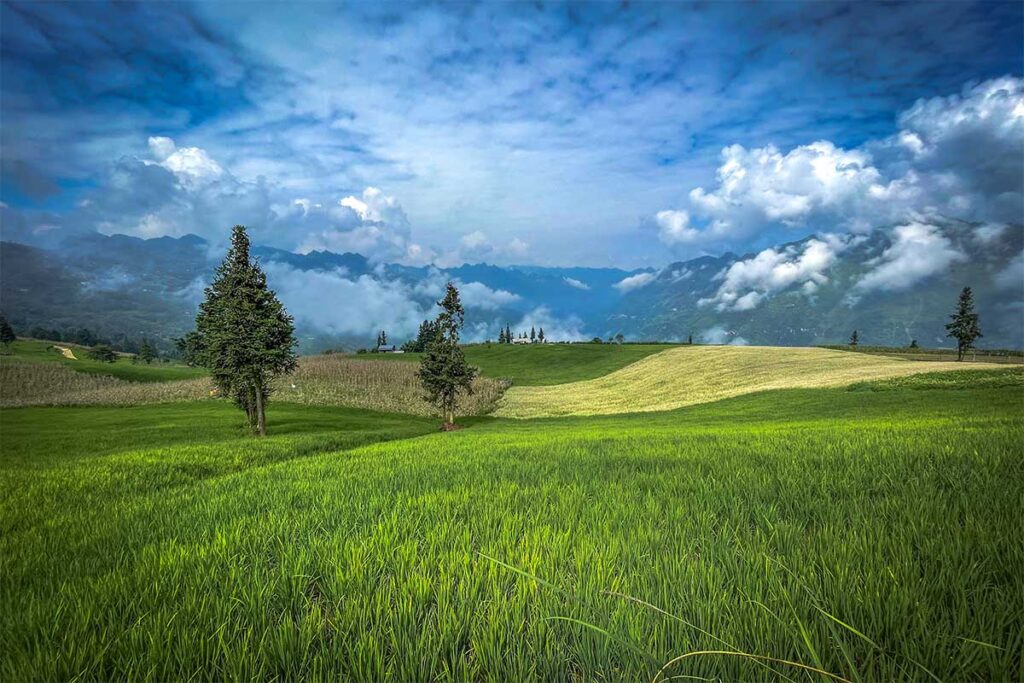
Often described as the “Tuscany of Vietnam,” Suoi Thau Plateau offers sweeping views over mountains, flower fields, and ethnic Hmong villages. You can reach the viewpoint by car or motorbike, but some stretches are steep or slippery—especially in wet season. Most travelers park near the top and walk the last section, or hire a local motorbike taxi (around 100,000 VND).
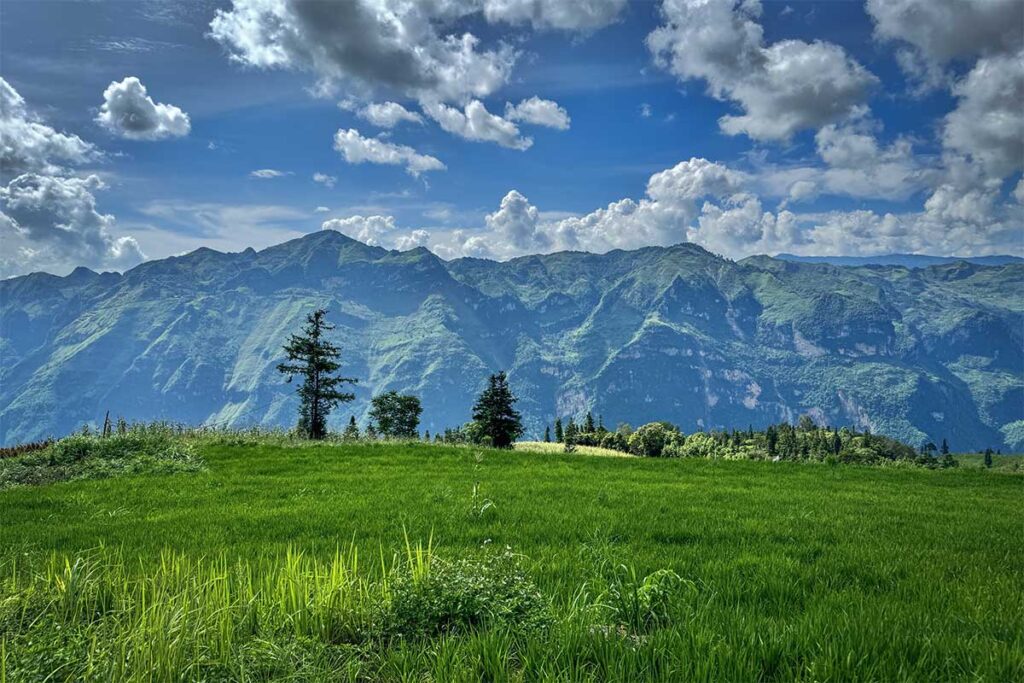
While there are small fees to enter certain flower gardens (~20,000 VND), the scenery itself is free and breathtaking. Expect basic infrastructure, a few snack stalls, and the occasional request for small cash payments from local vendors. Good visibility and blooming flowers make spring and early autumn the best time to visit.
2. Thac Tien Waterfall
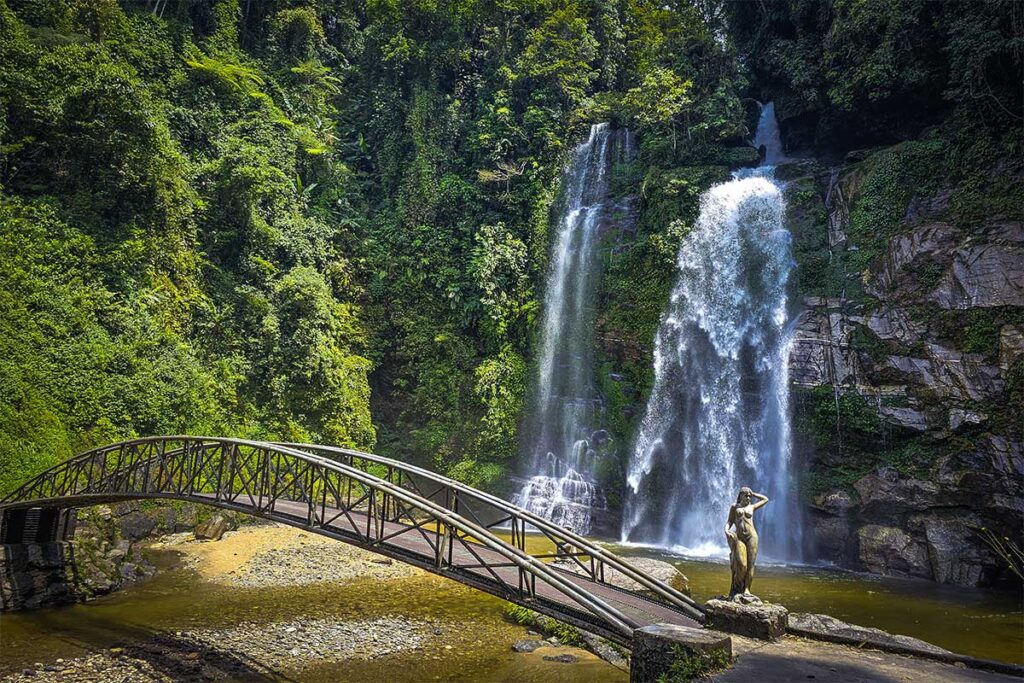
Thac Tien (also known as Tien Waterfall or Deo Gio Waterfall) is the most scenic natural site in Xin Man. Located about 9 km from Nam Dan commune, the waterfall is hidden at the edge of a bamboo forest and accessed by a staircase trail. The path down is slippery in wet weather, so take care—but it’s worth it. The powerful stream plunges down into a deep basin, and you can swim in its cool blue pools in the dry months. Entrance costs around 20,000 VND. Best visited March to June when the water is strongest.
3. Nan Ma & Nam Dan
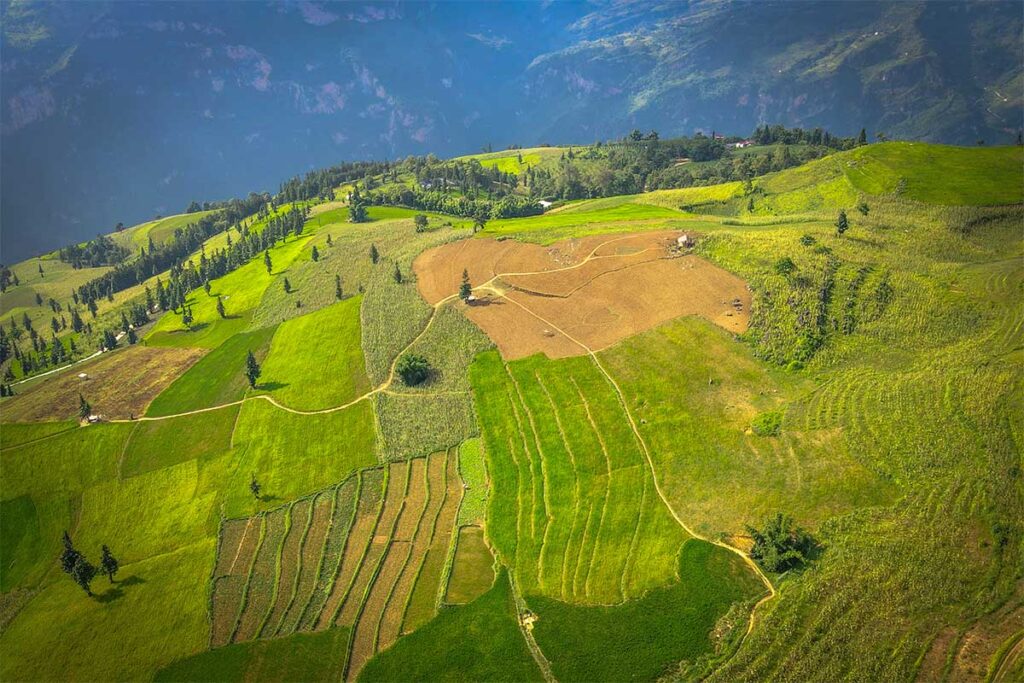
Just a short drive from Tien Waterfall is the quiet village of Nam Dan, home to the Nam Dan Ancient Rock Field. These mysterious stone slabs are carved with over 80 symbols—believed to be more than a thousand years old. You’ll also pass small Nung ethnic villages, perfect for cultural photos and low-key stops.
Further west lies Nan Ma, one of the most remote corners of Xin Man. It’s known for rice terraces and a war memorial commemorating communist intellectuals executed in 1952. Some local guides mention Than Tien Cave, said to be a spiritual site, but there’s little information about access or whether it’s worthwhile. You can ask locals if you’re curious, but don’t expect a developed attraction.
4. Chieu Lau Thi Peak
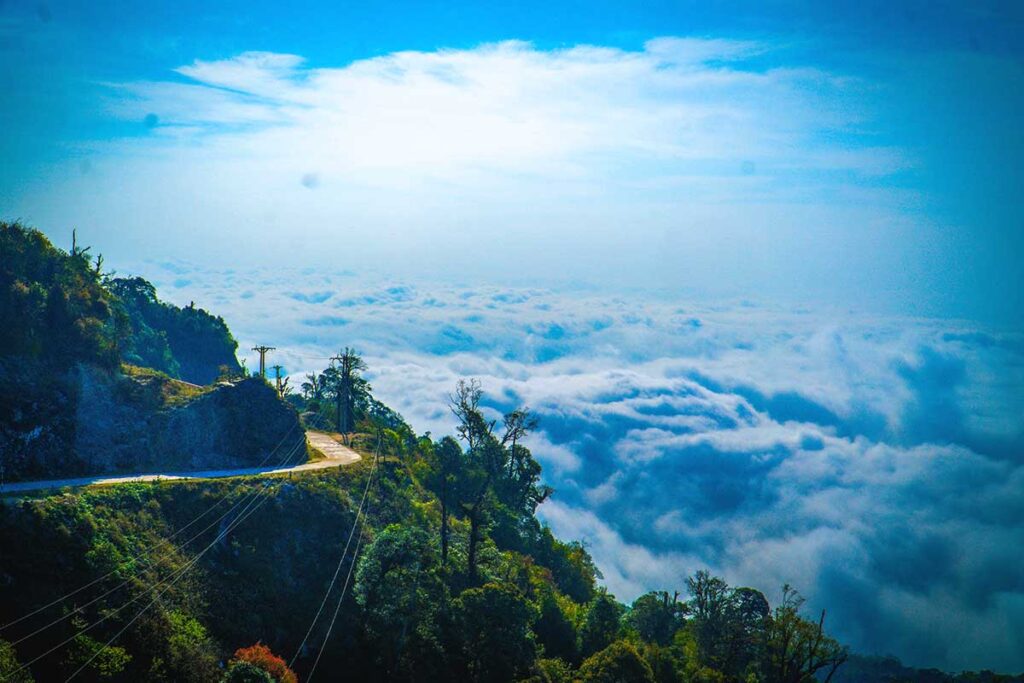
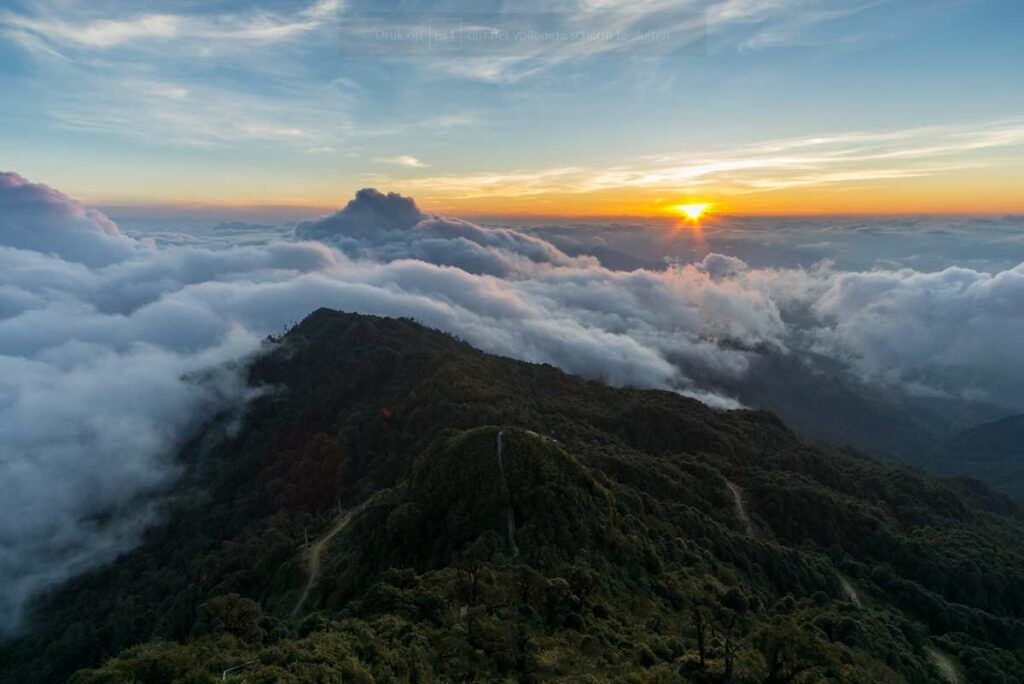
Shared between Xin Man and Hoang Su Phi, Chieu Lau Thi is a 2,400-meter-high peak offering 360° views and a sea of clouds at sunrise. You can reach the trailhead by car or motorbike, but the ride is long, steep, and not for inexperienced drivers. From the parking area, it’s a 45–60 minute hike to the summit along a marked trail. While the road is partially paved, landslides and rough patches are common. Bring warm clothes and start early if you want to catch the sunrise. Some visitors camp overnight or stay at nearby homestays like Chan Mui Homestay in Ho Thau village.
5. Coc Pai Town
Coc Pai is the main town of Xin Man and your likely base when exploring the district. The drive here is scenic no matter which direction you come from—either winding mountain roads from Bac Ha or a waterfall-filled valley from Ha Giang. The town itself is small and simple, mostly visited for food, fuel, or basic supplies. On Saturday nights, Coc Pai hosts a local night market with food stalls, produce, and cultural games like tug-of-war and sack races. While not a tourist attraction per se, the market offers a rare glimpse into local life.
6. Trekking, scenicloops & local culture
Xin Man isn’t developed for trekking like Sapa or Ha Giang City, but it’s a paradise for adventure travelers. You can drive or hike through remote Hmong, Tay, and Nung villages; pass rice fields and waterfalls; and cross rugged landscapes that few tourists ever see.
There are no official trails or tourist maps, so routes are often spontaneous—ideal for travelers who enjoy discovery and don’t mind improvising. Trekking requires a good sense of direction, or a local contact. Most visitors explore by motorbike, with or without a guide (some Easy Rider drivers from Ha Giang or Sapa know this region). Expect basic conditions and no English speakers—but that’s part of Xin Man’s charm.
Best time to visit Xin Man
Xin Man can be visited year-round, but each season offers a different kind of experience—especially if you’re interested in scenery, rice fields, or local life.
- Spring (March–May) – The weather is mild and pleasant, ideal for outdoor activities. Mountain views are often clear, and flower fields start to bloom around Suoi Thau Plateau.
- Summer (June–August) – Expect hot, humid days with regular rain, but this is when the landscape is at its greenest. Waterfalls are at their strongest, and rice terraces are in full growing season.
- Autumn (September–November) – A great time to visit for both weather and scenery. Rice fields turn golden during harvest, and there’s still plenty of green around. Waterfalls usually still have good flow.
- Winter (December–February) – Can be cold, especially at high elevations or in basic mountain homestays. Clear days offer good views, but the overall landscape is drier and less colorful.
Where to stay
Accommodation in Xin Man is extremely limited. The area sees very few visitors—international or domestic—so don’t expect tourist infrastructure.
Most available options are in Coc Pai Town, the main hub of the district. You’ll find a few local guesthouses, homestays, and very basic hotels. These are fine for a one-night stopover, but facilities are minimal. Hard mattresses and no English are common, but often still has hot showers and Wifi.
Outside of Coc Pai, there are almost no formal places to stay. If you’re planning to explore deeper into the district, it’s best to return to town by the evening.
For more comfort and choice, consider basing yourself in Hoang Su Phi (to the east) or Bac Ha (to the west, in Lao Cai Province). Both offer a wider range of homestays and small hotels, better suited for extended stays.
Tips for planning a trip in Xin Man
Xin Man is one of the most remote and least-visited areas in northern Vietnam. To make the most of your visit, it’s important to plan carefully.
Plan a drive between Bac Ha and Hoang Su Phi
Instead of staying overnight in Xin Man, a great way to explore the area is to drive through it on your way between Bac Ha (Lao Cai) and Hoang Su Phi (Ha Giang). This route takes about 3 hours, depending on where you start and stop, but with scenic detours and stops in Xin Man, you can easily turn it into a full-day trip.
There’s one main road connecting the two regions, winding through mountains, valleys, and terraced rice fields. Key sites like Thac Tien Waterfall, Suoi Thau Plateau, and Chieu Lau Thi Peak can be visited along the way with small detours.
In Hoang Su Phi, you’ll find more accommodation options—ranging from basic homestays to more upscale retreats—with many located in villages overlooking terraced fields. The main town is Vinh Quang, but many travelers stay in rural areas outside the center.
How to prepare
Xin Man is remote, with long stretches of road where you won’t find towns or even villages. Here’s how to prepare:
- Stock up: Refill your gas tank, buy snacks, and have enough drinking water before leaving a town. Coc Pai Town is your best bet for fuel, food, and supplies.
- Download offline maps: Mobile signal can be unreliable in the region, especially if you stray off the main road.
- Bring enough cash: There are no ATMs or card payment options in most places, including shops and food stalls.
- Vehicle check: If you’re self-driving, make sure your vehicle (especially motorbikes) is in good condition. Some roads are steep, rough, or slippery in bad weather.
Be flexible and self-sufficient
There is no developed tourism infrastructure in Xin Man. That’s part of its charm—but it means plans may need to change on the go. Homestays aren’t listed online, directions aren’t always clear, and weather can impact road conditions. Be ready to adjust your route, and don’t expect everything to go exactly as planned.
If you prefer more support, consider hiring a private driver or Easy Rider motorbike guide from Sapa, Bac Ha, or Ha Giang City—some of them know the region and can help navigate its lesser-known roads.
